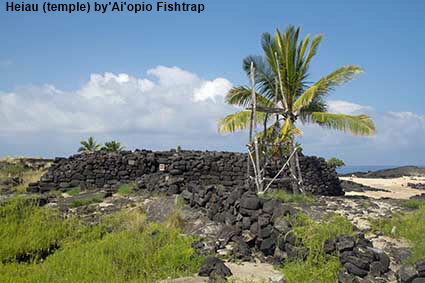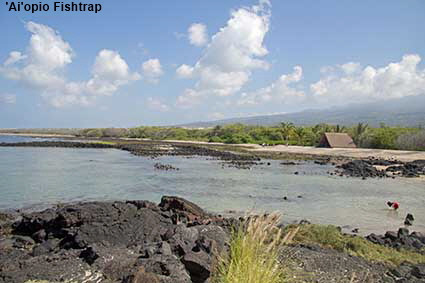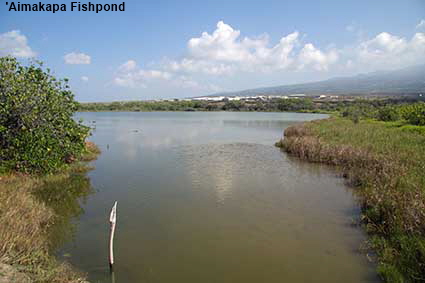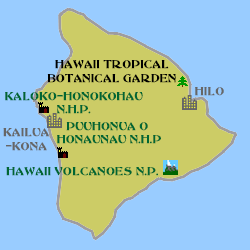Kaloko-Honokohau National Historical Park
People arrived on Hawaii 1,500 years ago and they established their own culture which survived until British, American and other settlers arrived. The westernmost Hawaiian island Niihau is privately owned and there strict controls on who can visit the island have ensured that the Hawaiian language and culture have survived. On the other islands incomers have supplanted most of the native culture with their own. With tourism to Niihau strictly controlled the ‘Hawaiian culture’ that most visitors experience is at a tourist culture show that projects a limited and sanitised version of the culture of its native people. However, the Big Island is the best place to see relics left the native Hawaiians and through those relics to gain a better understanding of the lost culture of the islands. On 50 plus DC we feature two historical sites, Kaloko-Honokohau National Historical Park where there are ancient Hawaiian fishponds (Kaloko in the Hawaiian language) plus ruins of an ancient settlement called Honokohau and Pu’uhonua O Honaunau National Historical Park where some reconstruction has taken place.
'Aimakapa Fishpond
The Hawaiians were also into fish farming. Aimakapa Fishpond is a large lake trapped behind the dunes which was used to raise fish for the chiefs. It is thought to be over 600 years old. Nowadays it is a refuge for wetland birds.
'Ai'opio Fishtrap
This was a hot and relatively barren place, so the Hawaiians were dependent upon fish for much of their food. Fish were caught in traps like ‘Ai’opio Fishtrap, a walled lagoon with an opening to the sea. The fish entered the trap at high tide by swimming through the opening or over the submerged walls. As the tide fell the fish were trapped in the enclosure and were easily netted.
Heiau (temple) by'Ai'opio Fishtrap
The Hawaiians had several gods with different specialisms such as peace, war, health, fishing or farming. They built temples that they called ‘Heiau’ There chiefs brought offerings and paid homage to carved idols representing the major Hawaiian gods such as Ku, the god of war. Offerings to Ku sometimes included human sacrifice. Some Heiau were open to all, such as those dedicated to Lono, the god of agriculture. The structure of the Heiau varied from a simple house surrounded by a wooden fence to massive open air temples. Here at Kaloko-Honokohau National Historical Park the Heiau stood on a large stone platform built from the black volcanic stone that abounds in the area. The platform has survived, but any buildings and idols have gone.
DLU160619
Click on Minimap to navigate
Home > US States > The West > Hawaii > Big Island >


To move forwards or backwards through the Big Island Trail click the arrows above, or select your next destination on the Minimap.





© Mike Elsden 1981 - 2025
The contents of this page may not be reproduced in full or in part without permission